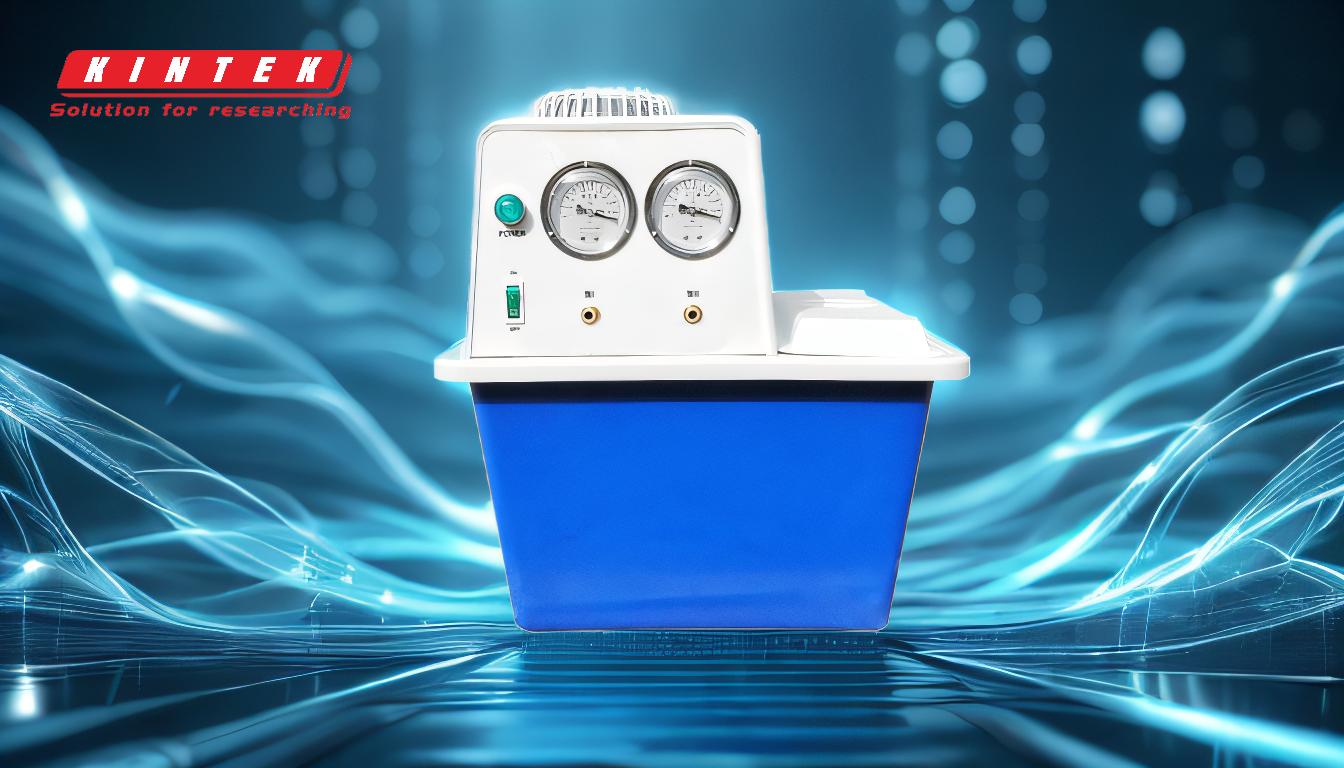Vacuum pumps are essential tools in various industries and laboratories, designed to create a vacuum by removing gas molecules from a sealed volume. The four primary types of vacuum pumps are rotary vane vacuum pumps, diaphragm vacuum pumps, liquid ring vacuum pumps, and scroll vacuum pumps. Each type has unique characteristics, making them suitable for specific applications depending on factors like the level of vacuum required, the robustness of the technology, and budget constraints. Understanding these types helps in selecting the right pump for a given application.
Key Points Explained:

-
Rotary Vane Vacuum Pumps
- How They Work: Rotary vane pumps use a rotating mechanism with vanes that slide in and out of slots to create a vacuum. As the rotor turns, the vanes trap gas and compress it, expelling it through an exhaust valve.
- Applications: Ideal for medium to high vacuum levels, these pumps are commonly used in laboratories, HVAC systems, and industrial processes.
- Advantages: They are robust, reliable, and capable of achieving relatively high vacuum levels.
- Considerations: They require regular maintenance due to wear on the vanes and may not be suitable for environments with particulate matter or corrosive gases.
-
Diaphragm Vacuum Pumps
- How They Work: Diaphragm pumps use a flexible diaphragm that moves up and down to create a vacuum. The diaphragm's motion compresses and expands the gas, pushing it out of the chamber.
- Applications: These pumps are suitable for low to medium vacuum levels and are often used in laboratories, medical devices, and cleanroom environments.
- Advantages: They are oil-free, making them ideal for applications requiring contamination-free operation. They are also quiet and require minimal maintenance.
- Considerations: They may have lower pumping speeds compared to other types and are less effective for high vacuum requirements.
-
Liquid Ring Vacuum Pumps
- How They Work: Liquid ring pumps use a rotating impeller inside a cylindrical casing filled with liquid (usually water). The liquid forms a ring that compresses and expels gas, creating a vacuum.
- Applications: These pumps are used in industries like chemical processing, food production, and power generation, where handling wet or corrosive gases is necessary.
- Advantages: They are highly durable, capable of handling wet or corrosive gases, and can operate at high flow rates.
- Considerations: They require a continuous supply of liquid, which can increase operational costs, and are less efficient for dry gas applications.
-
Scroll Vacuum Pumps
- How They Work: Scroll pumps use two interlocking spiral scrolls, one fixed and one orbiting, to compress and move gas. The orbiting motion creates pockets of gas that are progressively compressed and expelled.
- Applications: These pumps are used in laboratories, semiconductor manufacturing, and other applications requiring clean, oil-free vacuum environments.
- Advantages: They are quiet, oil-free, and capable of achieving high vacuum levels with minimal maintenance.
- Considerations: They are generally more expensive than other types and may have lower pumping speeds for certain applications.
In summary, the choice of vacuum pump depends on the specific requirements of the application, including the desired vacuum level, operational environment, and budget. Rotary vane pumps are robust and versatile, diaphragm pumps are ideal for clean and quiet operations, liquid ring pumps excel in handling wet or corrosive gases, and scroll pumps offer high performance in cleanroom environments. Understanding these differences ensures the selection of the most appropriate vacuum pump for any given task.
Summary Table:
| Type | How It Works | Applications | Advantages | Considerations |
|---|---|---|---|---|
| Rotary Vane Vacuum Pump | Uses rotating vanes to trap and compress gas, expelling it through an exhaust valve. | Laboratories, HVAC systems, industrial processes. | Robust, reliable, high vacuum levels. | Requires regular maintenance; not suitable for particulate or corrosive gases. |
| Diaphragm Vacuum Pump | Uses a flexible diaphragm to compress and expand gas, pushing it out of the chamber. | Laboratories, medical devices, cleanroom environments. | Oil-free, quiet, minimal maintenance. | Lower pumping speeds; less effective for high vacuum requirements. |
| Liquid Ring Vacuum Pump | Uses a rotating impeller and liquid ring to compress and expel gas. | Chemical processing, food production, power generation. | Durable, handles wet or corrosive gases, high flow rates. | Requires continuous liquid supply; less efficient for dry gas applications. |
| Scroll Vacuum Pump | Uses interlocking spiral scrolls to compress and move gas. | Laboratories, semiconductor manufacturing, cleanroom environments. | Quiet, oil-free, high vacuum levels with minimal maintenance. | More expensive; lower pumping speeds for certain applications. |
Need help selecting the right vacuum pump for your needs? Contact our experts today!











